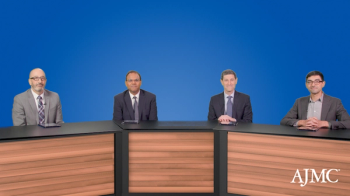
Introduction and Pathophysiology of Multiple Myeloma
Ryan Haumschild, PharmD, MS, MBA, introduces the faculty and sets the agenda to explore disease background, novel therapies, and operational considerations in relapsed/refractory multiple myeloma.
Episodes in this series

The program opens with an overview of multiple myeloma as a chronic, relapsing plasma-cell malignancy and sets the stage by revisiting pathophysiology, epidemiology, prognosis, and impact on quality of life. The faculty discuss how clonal plasma cells lead to end-organ damage (CRAB features), and why early diagnosis is critical for preserving function and outcomes. They then walk through standard first-line strategies, including transplant-eligible and transplant-ineligible pathways, and how they decide between regimens based on age, comorbidities, and performance status. This section also covers how relapse is defined clinically and biochemically, when to switch therapy, and what clinical factors they consider as patients move from first-line into fourth- or fifth-line treatment.
From there, the discussion turns to bispecific antibodies for relapsed/refractory multiple myeloma (RRMM) and the unmet needs that drove their development—particularly the limited durability of responses and poor outcomes in heavily pretreated patients. The panel reviews the mechanisms of action of approved bispecifics (engaging T cells via CD3 and targeting antigens such as BCMA and GPRC5D) and weighs the advantages and disadvantages of different targets. They highlight the pivotal data leading to approval of linvoseltamab and discuss how its high response rates and durable remissions influence their treatment choices, as well as the adverse events clinicians must anticipate and manage (eg, cytokine release syndrome, infections). A similar lens is applied to teclistamab, with emphasis on its key trial data, adverse effects profile, and how they currently select patients for available bispecifics while waiting for more head-to-head and real-world evidence.
In the final part of the series, the experts focus on operational and safety considerations that differentiate treatment options for RRMM. They stress the importance of strict adherence to step-up and maintenance dosing schedules for bispecifics and CAR T therapies to mitigate CRS and ICANS, and they walk through how these toxicities arise and are managed in day-to-day practice. The panel compares dosing logistics across linvoseltamab, teclistamab, talquetamab, and elranatamab, identifying “pain points” such as frequent early visits and inpatient observation requirements, and how these might be improved in the future. They conclude by outlining persistent unmet needs—including resistance, long-term safety, and access—and share what excites them most for the next 5 years, from better-tolerated bispecifics to smarter sequencing strategies that could further extend survival in RRMM.
Newsletter
Stay ahead of policy, cost, and value—subscribe to AJMC for expert insights at the intersection of clinical care and health economics.













































